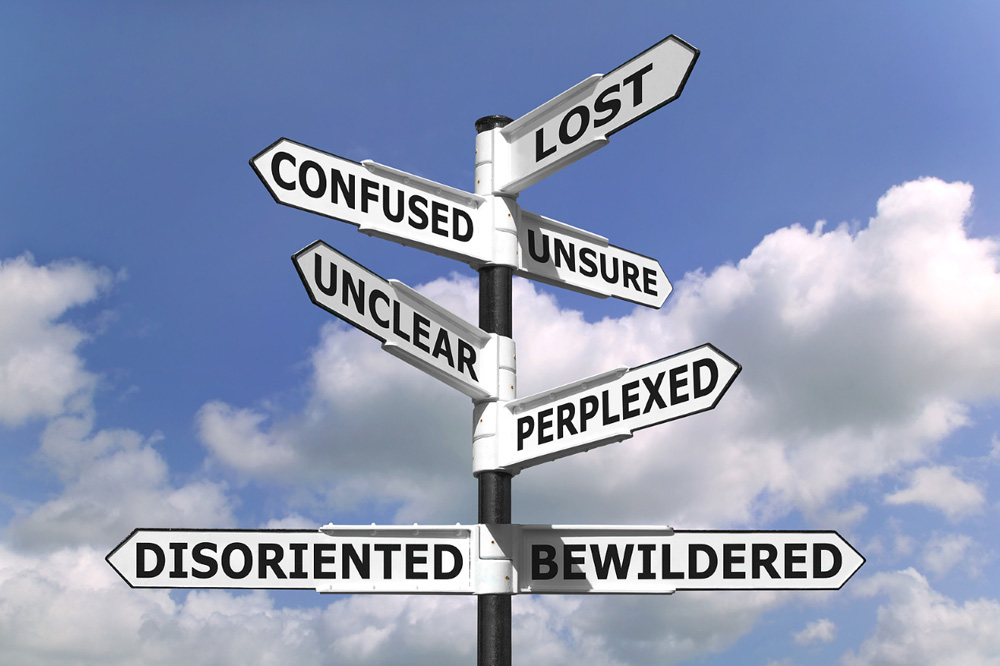We all have a story going on in our heads, the story of who we are, where we came from, where we’re going: the story of our life. Neuroscientists have learned from a generation of brain research that our stories aren’t just part of us, rather they are us in a fundamental way. But what happens when we misplace the plot of our story, when we get side-tracked by a pitfall, a pothole, a pandemic? What happens when we feel burned out and want a fresh start? What happens when our fairy tales go awry, and we get lost? For three years bestselling author Bruce Feiler collected hundreds of life stories from all 50 states of the US — people who lost homes and limbs, changed careers and genders, got sober and got out of bad marriages. He gathered thousands of hours of interviews and 6,000 pages of transcripts, then, with a team of 12, he spent a year coding the stories, looking for patterns that could help all of us thrive in times of change. Here are three things he learned:
Lesson #1: The linear life is dead. The idea that we’re going to have one job, one relationship and one source of happiness from adolescence to assisted living is hopelessly outdated. But this idea has shaped how we see our lives. This model peaked in the 1970s, with the idea that everyone does the same thing in their 20s, the same thing in their 30s, and then has a midlife crisis between age 39 and 44 1/2. Today even though we’ve updated how we view the world — we know about chaos, complexity, networks — we haven’t updated how we view our lives. We still expect them to be linear.
Lesson #2: The nonlinear life involves many more life transitions. We get through most life transitions with relative ease, but 1 in 10 becomes what he calls a lifequake — a massive burst of change that leads to a period of upheaval, transition, and renewal. The average person has three to five of these in their lives, and their average length is five years. That means we spend 25 years — or half of our adult lives — in transition. These don’t clump exclusively in middle age. Some people are born into lifequakes, and some of us have them in our 20s and our 60s. What causes so much anxiety is that we still expect these lifequakes to happen on a predictable schedule, because we’re all haunted by the ghost of linearity. We think life is going to be linear, and we are completely unnerved when it’s not. We’re comparing ourselves to an ideal that doesn’t exist and beating ourselves up for not achieving it. The pandemic has made this problem worse and for the first time in a century, the entire planet is going through the same lifequake at the exact same time. We are all in a transition right now.
Lesson #3: Transitions are a skill we can — and must — master.
Here are five tips, based on his research, to help you get through your lifequakes:
Tip #1: Begin with your transition superpower. One way to understand a lifequake is as a physical blow: The lifequake puts you on your heels; the life transition is what puts you back on your toes. And yet when most people enter a lifequake, they feel overwhelmed and go to one of two extremes. They either make a 212-item to-do list and say, “I’ll get through it in a weekend,” or they lie in a fetal position and say, “I’ll never get through it”. Both are wrong. These big life transitions have three phases: (1) the long goodbye, when you mourn the old you; (2) the messy middle, when you shed your old habits and create new ones; and (3) the new beginning, when you unveil your fresh self. But, these phases do not happen in order. Just as life is nonlinear, life transitions are nonlinear. Instead, each person gravitates to the phase they’re best at — their transition superpower — but bogs down in the one they’re weakest at — their transition kryptonite. From his interviews, half of people dislike the messy middle, but others thrive in it, are good at making lists and analysing their options. If that’s you, then start there. Meanwhile 4 in 10 dislike the long goodbye, but there are some of us that excel at it. Maybe you like confronting your feelings and mourning the past? Good — begin there. The point is: Transitions are hard. Start with your superpower, build confidence, and go from there.
Tip #2: Accept your emotions, accept that transitions are emotional. Some people cope with their feelings by writing them down; others by buckling down and going to work. But 8 in 10 turn to rituals — sing, dance, hug. Rituals can be especially effective during the long goodbye as they are statements — to ourselves and to others — that we’ve gone through a change and are ready for what comes next.
Tip #3: Try something new. The messy middle is scary, and disorienting. Now what? His data show we tend to do two things during our time in the wilderness: first we shed things — mindsets, habits, routines. Shedding lets us make room for what comes next — astonishing acts of creativity. At the bottom of our lives, we can dance, cook, garden, take up ukulele. The simple act of imagining — a painting, a poem, a loaf of bread — allows us to imagine a better future.
Tip #4: Seek wisdom from others. Perhaps the most painful part of a life transition is that we feel alone which is why it’s essential that we don’t go through transitions by ourselves. Share your experience with others, whether it’s a friend, a loved one, a colleague or a stranger. Not everyone craves the same type of response. Each of us has a preferred type of feedback. One-third of us like “comforters” — responses like “I love you, you’ll get through this.” One-quarter like nudgers — “I believe in you, but maybe you should try this.” But one in six of us likes slappers — “OK, get over yourself; it’s time to try this instead.” The most important thing is not to assume the person you’re asking for help — or the person you’re helping — knows the type of support that works best. Tell them (or ask them) before you receive (or give) advice.
Tip #5: Rewrite your life story. A life transition is fundamentally a meaning-making exercise. It’s an autobiographical occasion that calls on us to revise and retell our life stories, adding a new chapter in which we find meaning in our lifequake.
If we can reimagine our life transitions, instead of viewing them as miserable periods we must grit and grind our way through, we could see them as healing periods when we take the wounded parts of our lives and repair them. For more ideas about how to reimagine your life transitions, you could check out his book, Life Is in the Transitions: Mastering Change at Any Age.




